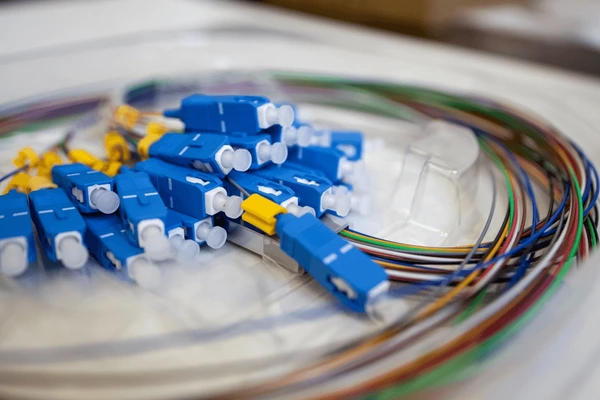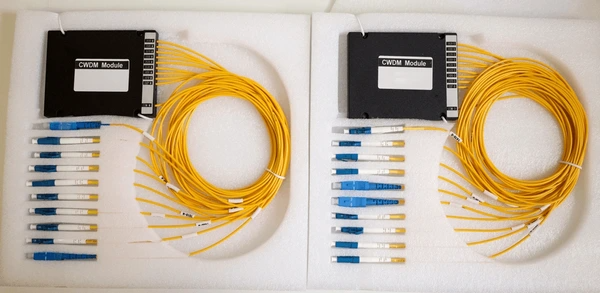
Multiplexing allows multiple signals or data streams to be transmitted over a single medium. This technique boosts efficiency by maximizing bandwidth and minimizing the need for additional channels. It plays a crucial role in telecommunications, broadcasting, networking, and various data transmission fields. In this article, we will explore the different types of multiplexing, its practical applications, and the technical advantages it offers.

What is Multiplexing?
Multiplexing enables multiple signals to share the same transmission path. It divides the medium into separate channels, making efficient use of available resources. This increases network capacity and reduces infrastructure costs.
Key Benefits:
- Bandwidth Optimization: Multiple signals can share the same channel.
- Cost Savings: Fewer connections mean lower infrastructure costs.
- Improved Resource Management: Networks can handle larger amounts of data without overloading.
Types of Multiplexing
There are several types of multiplexing, each offering unique advantages. The primary types include Time Division Multiplexing (TDM), Frequency Division Multiplexing (FDM), Wavelength Division Multiplexing (WDM), and Code Division Multiplexing (CDM). Each has distinct characteristics suited to specific applications.
💡 When exploring the types of multiplexing, Eureka Technical Q&A provides expert explanations, helping you understand the different methods like TDM, FDM, and WDM, and their applications across various communication systems to guide you in choosing the most suitable technology for your needs.
1. Time Division Multiplexing (TDM)
In Time Division Multiplexing (TDM), each signal is assigned a specific time slot. The system sends multiple signals in a sequential manner, ensuring that no interference occurs.
Advantages of TDM:
- Time Efficiency: TDM optimizes the use of time by assigning a time slot to each signal.
- Synchronization: Signals are synchronized, simplifying the management of resources.
Applications of TDM:
- Telecommunications: TDM is commonly used for digital telephony, where multiple phone calls share the same circuit.
- Satellite Communication: TDM helps allocate time slots for data streams in satellite systems.
2. Frequency Division Multiplexing (FDM)
Frequency Division Multiplexing (FDM) divides the available bandwidth into distinct frequency bands. Each signal is transmitted on a separate frequency, allowing for simultaneous communication without interference.
Advantages of FDM:
- Simultaneous Transmission: FDM enables concurrent data streams, making it faster than TDM.
- Efficient Frequency Use: It maximizes the use of available frequency bands.
Applications of FDM:
- Radio Broadcasting: FM and AM radio stations use FDM to transmit signals on different frequencies.
- Cable TV: FDM allows multiple TV channels to be transmitted on a single cable, each operating on its own frequency.
3. Wavelength Division Multiplexing (WDM)
Wavelength Division Multiplexing (WDM) is a key technology in fiber-optic communication. It divides the fiber’s bandwidth into multiple wavelength channels. Each channel carries a separate data stream.
Advantages of WDM:
- High Capacity: WDM enables the transmission of large amounts of data, making it ideal for high-demand applications.
- Long-Distance Transmission: WDM is suitable for transmitting data over long distances with minimal loss.
Applications of WDM:
- Optical Networks: WDM plays a key role in fiber-optic communication. It helps providers deliver high-speed internet more efficiently and cost-effectively.
- Telecom Infrastructure: WDM technology supports the backbone of global telecommunications.
4. Code Division Multiplexing (CDM)
Code Division Multiplexing (CDM) works by encoding each signal with a unique code. These codes ensure that multiple signals can occupy the same frequency without interference.
Advantages of CDM:
- Maximized Frequency Use: CDM allows multiple signals to share the same frequency range.
- Interference Resistance: CDM systems are less affected by noise and interference.
Applications of CDM:
- Mobile Networks: CDMA (Code Division Multiple Access) technology is widely used in mobile networks.
- GPS Systems: GPS satellites use CDM to differentiate signals from various satellites.
Applications of Multiplexing in Modern Technology

Telecommunications
Multiplexing is essential in telecommunications, where it helps manage resources effectively. As networks evolve, 5G technology and Massive MIMO (Multiple Input Multiple Output) leverage advanced this techniques to boost data throughput.
Broadcasting and Streaming
For media and broadcasting, efficient data transmission ensures smooth and uninterrupted content delivery. Techniques like Frequency Division allow radio stations and TV networks to broadcast multiple channels on different frequencies, reaching large audiences without interference.
Data Centers and Cloud Networks
In the realm of cloud computing, fiber-optic networks and high-speed internet rely on efficient transmission techniques to deliver fast, reliable services. Wavelength Division Multiplexing (WDM), a related method, further enhances bandwidth use by combining multiple data streams into a single optical fiber.
Real-World Example: Fiber Optic Networks
A key example of it in action is the fiber-optic network. Using WDM, these networks can carry terabits of data over vast distances. For instance, long-haul optical networks can transmit multiple terabits per second across thousands of kilometers. This drastically reduces the cost per bit and boosts overall efficiency in internet backbones.
The Future of Multiplexing
The future of data transmission lies in quantum communication and space division multiplexing, both offering potential solutions to the growing demand for faster and more secure communication. As these technologies develop, they will continue to revolutionize industries by pushing the boundaries of data transmission capabilities.
Conclusion
Division, and Code Division are essential for efficient communication in modern systems. Each of these methods offers unique advantages, whether for mobile networks, broadcasting, or cloud services. By optimizing bandwidth, reducing infrastructure costs, and enabling simultaneous data transmission, these strategies ensure smooth and reliable communication worldwide.
To get detailed scientific explanations of multiplexing, try Patsnap Eureka.


